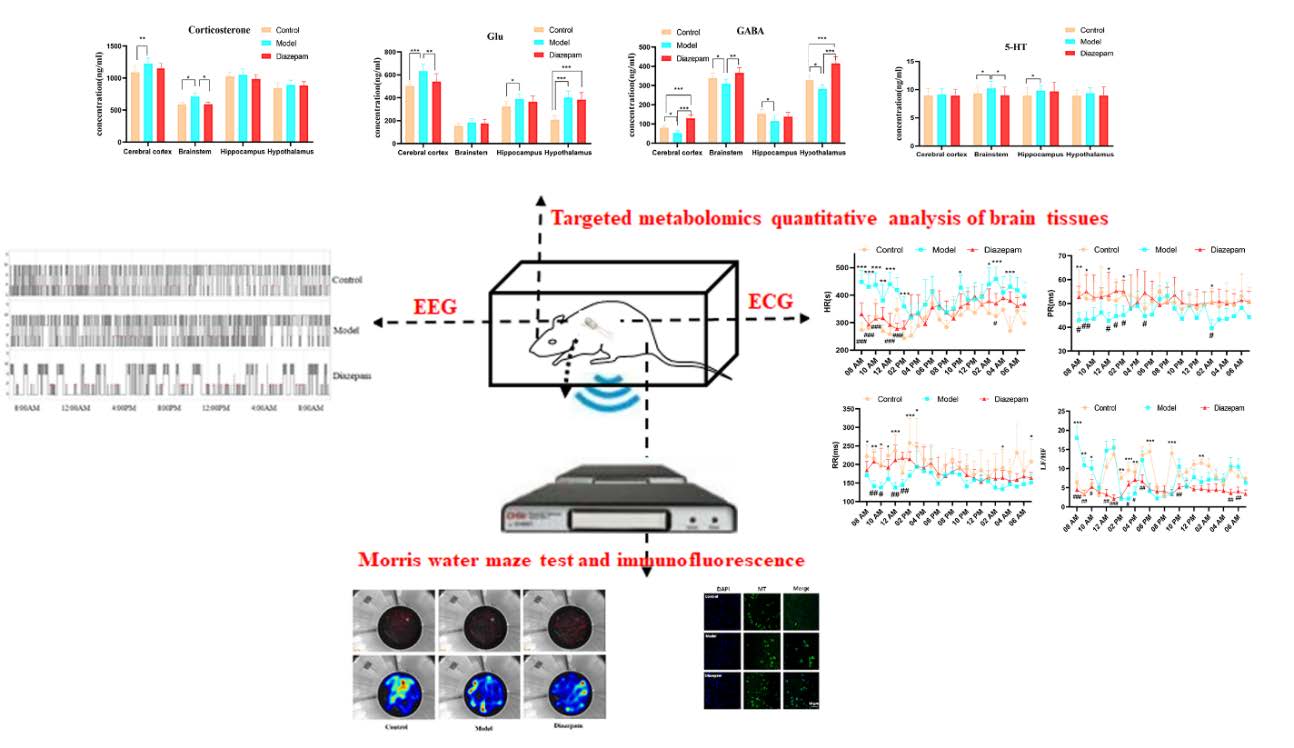Articles
Article Tools
Stats or Metrics
Article
Original Article
Exp Neurobiol 2021; 30(6): 387-400
Published online December 31, 2021
https://doi.org/10.5607/en21023
© The Korean Society for Brain and Neural Sciences
Validation of the Thyrotoxicosis-associated Insomnia Model Induced by Thyroxine through Sympathetic Stimulation: Face, Construct and Predictive Perspectives
Zhifu Ai1†, Hongwei He1†, Tingting Wang1, Liling Chen1, Chunhua Huang1, Changlian Chen1, Pengfei Xu1, Genhua Zhu1, Ming Yang1,2, Yonggui Song1* and Dan Su1*
1Key Laboratory of depression animal model based on TCM syndrome, Jiangxi Administration of traditional Chinese Medicine, Jiangxi Key Laboratory of TCM for prevention and treatment of brain diseases with cognitive impairment, Jiangxi University of Chinese Medicine, Nanchang 330006, 2Key Laboratory of Modern Preparation of Traditional Chinese Medicine, Ministry of Education, State Key Lab of Innovation Drug and Efficient Energy-Saving Pharmaceutical Equipment, Jiangxi University of Traditional Chinese Medicine, Nanchang 330004, China
Correspondence to: *To whom correspondence should be addressed.
Yonggui Song, TEL: 86-791-87802135, FAX: 86-791-87802135
e-mail: songyonggui1999@163.com
Dan Su, TEL: 86-791-87802135, FAX: 86-791-87802135
e-mail: sud94@aliyun.com
†These authors contributed equally to this article.
This is an Open Access article distributed under the terms of the Creative Commons Attribution Non-Commercial License (http://creativecommons.org/licenses/by-nc/4.0) which permits unrestricted non-commercial use, distribution, and reproduction in any medium, provided the original work is properly cited.
Abstract
Insomnia has become a common central nervous system disease. At present, the pathogenesis of insomnia is not clear. Animal models can help us understand the pathogenesis of the disease and can be used in transformational medicine. Therefore, it is very necessary to establish an appropriate model of insomnia. Clinical data show that insomnia patients with high levels of thyroxine and often accompanied by cardiovascular problems, a common mechanism underlying all of these physiological disruptions is the sympathetic nervous system. Combined with the characteristics of chronic onset of clinical insomnia, an insomnia model induced by long-term intraperitoneal injection of thyroid hormone has been created in our laboratory. In this paper, the insomnia-like state of the model was evaluated based on three validity criteria. Face validity has been demonstrated in metabolism, the Morris water maze, electrocardiogram (ECG) and electroencephalogram (EEG). Structure validity has been proved by the results of targeted metabolomics. After treatment with diazepam, a commonly used clinical anti-insomnia drug, the above physiological and pathological disorders were reversed. The results of comprehensive analysis show that the established thyrotoxicosis-associated insomnia model meets the validity requirement to establish an appropriate animal model of insomnia. The model presented in this article might help to study pathogenetic mechanisms of clinical insomnia, as well as to test promising methods of insomnia treatment.
Graphical Abstract

Keywords: Insomnia, Animal model, Thyroxine, Sleep disorders, Rats


